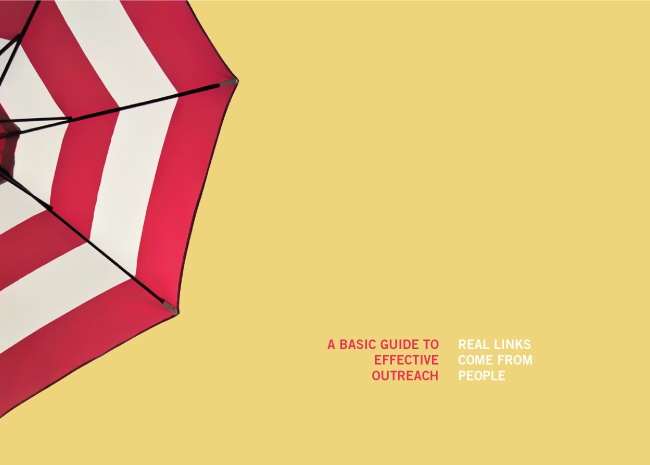Great outreach is the only way to build worthwhile links. Real links come from people, not websites, and to secure links you must be able to effectively communicate with these people.
Outreach sets the table for your campaign, and nothing gets accomplished without effective outreach. Regardless of link building tactic or keyword research, outreach will be involved at some point, and often the difference between securing links for your web content and squandering opportunities is outreach.

However, great outreach doesn’t happen by magic – it takes hard work, research, and dedication. Effective outreach also takes social skills, a bit of persuasiveness, and salesmanship. Fortunately, there are a number of guides and resources that can help you excel in multiple forms of outreach.
Today I want to discuss the underlying principles in how to create effective outreach. I’m going to cover the essential basics that absolutely every SEO agency should know. If you are interested in learning how to choose the right SEO company for your business read our guide "How to choose the best SEO company."
Understand Your Business
The first step in effective outreach is to ensure you fully understand the business you are representing.
Whether it is your own business or a client, there are a few key aspects to consider.
- Unique value – understand the unique value your business provides to customers so you can communicate your value clearly and succinctly
- Branding/style – ensure you fully understand company branding/style so you can match this in your outreach
- Target audience/buyer personas – understand the key attributes and traits of your target audience and keep them in mind throughout all of your outreach (and prospecting) efforts
Fully understanding the business you are representing is a crucial step in the outreach process. If you can’t clearly express the unique value of your business, or the business you’re representing, you’ll never be effective in convincing someone it’s worthwhile to link to your site.
Create an Outreach List
Before you can begin a campaign you’ll need a centralized location to keep track of your link building project. This documentation will also need an outreach list, of course.

There are a variety of tools you can use for this, depending on your needs. A few potential tools include:
You can also download this free outreach template to use for your own campaigns!
For example, here are some great methods for finding authoritative websites and influential people:
- Advanced search strings in Google
- Social media lists and tools
- Online forums and communities
As you find potential prospects, fill out their respective information within your outreach list. Here is some of the information you should track:
- Contact name
- Site/company they represent
- Position at company/site
- Social profiles (sometimes more effective than email)
- Previous contact with person
- Date you outreach to them
Depending on your campaign you may need more or less information than is listed here, but this is the basic structure of a useful outreach list. Creating this list prior to sending your outreach messages is preferable as it will make life easier later on.
Thorough Link Prospecting
Once you have created an outreach list, you can begin the link prospecting process.
Start going through your outreach list and vet target sites until you are left with an organized list of highly qualified link prospects and opportunities. Remove sites that do not meet your quality and relevancy standards.
At Page One Power we evaluate a wide variety of link metrics to assess the quality of any potential link.

It is important to be thorough with your prospecting as you want to really drill down and find the sites worth targeting. Put in the necessary time and effort to make sure you are pursuing the best and most relevant links.
Ensuring quality and relevance before you start outreach will help you build good links that make sense.
For more prospecting tips, check out my article on Search Engine Land.
Understand Your Link Targets
Once you have refined your outreach list it’s time to dive into research.
The goal with this research is to familiarize yourself with the people you’ll be contacting and ensure you fully understand the people behind the websites you’re targeting.
Understanding the person behind the website will allow you to:
- Communicate intelligently about their industry
- Speak persuasively to why a link will benefit their website
- Explain why their audience will benefit from the link
Communicating effectively relies upon the ability to speak directly to your audience.
For the purpose of outreach, this means speaking their lingo.
You need to be able to explain to them, in their terms, why your link would be valuable to their site - outreach should always be about your target audience, not you. In order to persuasively explain why they should link, you need to understand their motivations and their industry.
Obviously you won’t be able to know everything about a person from simply looking at their website. However, you can get a good idea of their interests and begin to understand what’s important to them.
It is equally important to understand their site’s readership/audience.
Often the best way to get through to a webmaster is by clearly demonstrating how your link would be useful to their audience. If you understand the wants and needs of the webmaster’s audience, then you can better explain how a link to your site would fulfill those wants and needs.
Even when it would be valuable for another website to link to yours, the ability to explain why it’s valuable is imperative. Persuasive and effective communication within outreach is critical.
Crafting Your Outreach
Now that you have a polished outreach list and a firm understanding of your link targets, it is time to start crafting your outreach messages.
To be effective with your outreach, you will need some trial and error to discover what works best in your particular niche or industry. However, there are some universal best practices to follow at the start of a campaign:
- Always personalize
- Always be polite
- Don’t settle for contact forms
- Follow website guidelines
- Follow up
These are some of the accepted best practices that are essential to crafting effective outreach. Adhering to these best practices will provide you a solid foundation for your outreach from which you can then experiment with.

The final best practice I listed – follow up – actually has its own set of best practices worth considering as well.
Remember, you’re contacting real people with real lives. They’re often busy and won’t always be immediately able to respond.
Sometimes they might miss your message or simply forget to respond. It is important to follow up on your outreach as more often than not it will take more than one message to reach someone.
Further best practices include:
- Follow up every three to four days to keep outreach fresh without becoming a nuisance (use tools like Boomerang or BuzzStream to manage follow ups).
- Move on to your next contact after three or four messages with no response.
- Make every follow up unique, but always point back to your original message.
Each follow up is the chance to try something new, perhaps utilizing a different communication channel or simply switching subject lines.
Don’t be afraid to inject some personality, especially if your initial attempts fail. But don’t forget to be respectful – you’re still representing a company.
Email Outreach
Email is the most common method of communication in the digital era. Here are some fundamental features of an effective email:
- Clear subject
- Proper address
- Message clarity
- Brevity
- Call to action (CTA)
- CTA (second)
- Signature
Clear Subject
Be as direct and specific as possible.
Mention the site by name and include a specific call to action (CTA), such as “Add This Resource”. The person reading your subject line should immediately understand why you are contacting them and the nature of your inquiry. In fact, the site may already have guidelines for outreach, which you should absolutely follow.
Proper Address
Ensuring that you have the proper email address may seem simple, but if you overlook this it won’t matter how spectacular your message is as it won’t reach the right person. Make sure you have the most appropriate address to give yourself the best chance for success.
Message Clarity
Try to explain your message as clearly and directly as possible.
Take readability into account as well and try to avoid long paragraphs or large chunks of text. Always read your email aloud and see if any portions are unclear - would a third party understand your message implicitly?
Brevity
Your outreach should be long enough to explain your purpose clearly, but also succinct as people are busy and will typically not take the time to read long messages.
Include a Call to Action (CTA)
Your primary CTA within the body of your outreach should be telling the person you are contacting why it would benefit them to link and where they should link.
Link outreach isn’t complete unless you actually ask for a link.
CTA (second)
Including a second CTA is also important.
For example, you could tell them you look forward to hearing from them or to email you back for more information. Include something that prompts the person you are contacting to take some sort of action.
The second CTA is extremely important, as it gives them a third option between either linking or not - contact you for more information. Most links require multiple outreach attempts.
Signature
Finally, make sure you include a proper email signature.
Your signature should explain who you are and demonstrate you are a real person. It may be helpful to list other contact information and options for reaching you.
Track Your Results
Tracking results is useful in all aspects of marketing, and this is no different in outreach.
Tracking the response rates and results of your various outreach strategies will help you determine what is effective, and when it is time to pivot your strategy. By using this data you can continuously improve your outreach and become more efficient.
Every company and niche is different, and by tracking your results you can find the unique combination of techniques and strategies that will help you excel in your particular situation.
Putting It All Together
So now that we’ve gone over all the different parts and pieces of what makes for effective outreach, let’s put it all together.
- Understand your business
- Unique value
- Branding/style
- Target audience/buyer personas
- Create an outreach list
- Find potential prospects
- Advanced search strings and modifiers in Google
- Social media lists and tools
- Online forums and popular communities
- Fill out information on outreach list
- Contact name
- Site/company they represent
- Position at company/site
- Social profiles (sometimes more effective than email)
- Previous contact with person
- Date you outreach to them
- Find potential prospects
- Thorough link prospecting
- Vet outreach list using smell test
- Understand your link targets
- Communicate intelligently about their industry
- Speak persuasively to why a link will benefit their website
- Explain why their audience will benefit from the link
- Crafting your outreach
- Follow general best practices
- Always personalize
- Always be polite
- Don't settle for contact forms
- Follow website guidelines
- Follow up
- Follow email specific best practices
- Use an appropriate subject line
- Consider the length and readability of your message
- Include a call to action (CTA)
- Provide a proper email signature
- Follow general best practices
- Track results
- Use data to continuously improve efficiency of outreach


